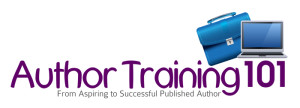 What does “author platform” really mean? There are numerous definitions as well as opinions about how you create one–or if you should.
What does “author platform” really mean? There are numerous definitions as well as opinions about how you create one–or if you should.
A Few Definitions
According to Chuck Sambuchino, author of Create Your Writer Platform, “a platform is your visibility as an author” and “your personal ability to sell books right this instant.” That’s why publishers want to know if you have one—and why you need to evaluate if you are ready now to become an author.
Michael Hyatt, author of the bestselling Platform: Get Noticed in a Noisy World, defines it as “the thing you have to stand on to be heard.” He elaborates by saying this stage “is built of people” and “is the means by which you connect with existing and potential fans.” In an interview in Publisher’s Weekly in May 2012, Hyatt, said, “Until about six years ago, having a platform meant having a radio or TV show, a newspaper or magazine column, a bestselling book, or celebrity status. Today, a platform is about leading a tribe of engaged followers.”
The word “tribe” was popularized by Seth Godin, in his book Tribes, We Need You to Lead Us, when he introduced the concept of creating a group of engaged followers to lead. He says you don’t create a tribe overnight but by beginning several years prior to your book being released.
I like the definition provided by Jane Friedman, web editor of the Virginia Quarterly Review and former publisher of Writer’s Digest (F+W Media). She says agents and editors are “looking for someone with visibility and authority who has proven reach to a target audience.”
Defining Visibility, Reach, Authority, and Influence
In the online world, there’s lots of talk about “visibility” and “reach” and “authority,” which also is called “influence.” Yet, this applies to the offline world as well. Here’s how these elements work when it comes to building platform in general:
- Visibility: You do and say things that make you visible, such as speaking, getting published in online and traditional publications, appearing on radio and television, using social media, including social networks, blogging, podcasting, etc. This helps people get to know you and your work as well as to trust and like you. They become your fans, followers, peeps, subscribers. They become part of a community, or tribe, you create or attract around you.
- Reach: What you do and say gets shared or talked about. People mention you in social or traditional media. Your posts and status updates get tweeted, liked, +1’d. Thus, the ability you have to contact or touch people extends farther than your current location or circle of acquaintances and beyond the bounds of your immediate community.
- Authority: Your credentials and expertise give you authority in your field. Coupled with your visibility and reach, you become influential.
- Influence: You gain an ability to engage and impact others. They sign up for your mailing list, subscribe to your blog, follow you on social networks, take up your causes, listen to what you say, believe in you and what you say or write, and do what you ask.
How to Create a Platform
Online, it is said that visibility plus reach equals influence, but this is true offline, too. If you can apply all of these elements—visibility, reach, authority, influence—to your target market, you create a platform. Therefore, having a platform means you become visible to the target audience you want to reach with your book, your audience sees you as having authority and they engage with you at a high level giving you influence in that market. My definition of platform is:
Visibility, authority and engagement with your book’s target audience that gives you influence in that market.
 Note: You can read additional blogged draft excerpts from my new book, The Author Training Manual (Writer’s Digest Books, March 2014) here. Only select pieces from the manuscript, a “working draft,” were posted—not the complete manuscript. Read the next post in the The Author Training Manual blogged-book series by clicking here. Purchase the book on Amazon.com, barnesandnoble.com or at Writersdigestshop.com.
Note: You can read additional blogged draft excerpts from my new book, The Author Training Manual (Writer’s Digest Books, March 2014) here. Only select pieces from the manuscript, a “working draft,” were posted—not the complete manuscript. Read the next post in the The Author Training Manual blogged-book series by clicking here. Purchase the book on Amazon.com, barnesandnoble.com or at Writersdigestshop.com. Lea rn how to create a successful book—one that sells to publishers and to readers—by developing an AUTHOR ATTITUDE and writing a BUSINESS PLAN for a MARKETABLE BOOK. Register for the AUTHOR TRAINING 101 Home-Study Course, and go from aspiring to successful published author! This course is based on The Author Training Manual. If you like what you’ve read here, you’ll love the course.
rn how to create a successful book—one that sells to publishers and to readers—by developing an AUTHOR ATTITUDE and writing a BUSINESS PLAN for a MARKETABLE BOOK. Register for the AUTHOR TRAINING 101 Home-Study Course, and go from aspiring to successful published author! This course is based on The Author Training Manual. If you like what you’ve read here, you’ll love the course.
Photo courtesy of freedigitalphotos.net.